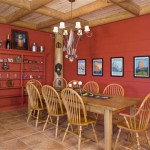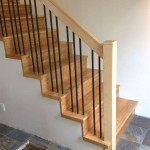```html
South Florida Interior Design Ideas: Embracing Coastal Elegance
South Florida interior design is a unique blend of influences, drawing inspiration from the region's vibrant culture, tropical climate, and stunning natural landscapes. Successfully capturing the essence of South Florida in an interior space requires a thoughtful approach that considers both aesthetics and functionality. The challenge lies in creating a space that feels both luxurious and comfortable, reflecting the relaxed yet sophisticated lifestyle synonymous with the area.
The core principles of South Florida interior design revolve around maximizing natural light, incorporating elements of nature, and creating a sense of openness and flow. Color palettes tend to lean towards lighter, brighter shades, reflecting the abundance of sunshine. Materials are often chosen for their durability and ability to withstand the humid climate, while textures play a crucial role in adding depth and visual interest. This article will explore key aspects of this design style, offering practical ideas for transforming any space into a South Florida haven.
Maximizing Natural Light and Embracing Open Floor Plans
One of the defining characteristics of South Florida homes is the abundance of natural light. Interior design strategies actively seek to amplify this natural resource, creating bright, airy spaces that feel welcoming and cheerful. This is typically achieved through several key design elements.
Large windows and sliding glass doors are essential features, blurring the lines between indoor and outdoor living. These expansive openings not only allow ample sunlight to flood the interiors but also offer unobstructed views of the surrounding landscape, whether it's the ocean, a lush garden, or a vibrant cityscape. Minimalist window treatments, such as sheer curtains or light-filtering blinds, are preferred to maximize light penetration while still providing privacy.
Open floor plans are also a common feature, promoting a sense of spaciousness and facilitating effortless movement throughout the home. Living rooms, dining areas, and kitchens often flow seamlessly into one another, creating a unified and cohesive living space. This open design allows for better light distribution and encourages social interaction.
Strategically placed mirrors can further enhance the effect of natural light. Mirrors reflect light back into the room, making it feel larger and brighter. Consider placing a large mirror opposite a window to maximize its impact. Additionally, light-colored walls and ceilings contribute to the overall brightness of the space, reflecting light rather than absorbing it. White, off-white, and pale pastel shades are popular choices for creating a light and airy atmosphere.
Incorporating Coastal Elements and Natural Materials
The coastal environment of South Florida serves as a major source of inspiration for interior design. Incorporating elements of the beach and ocean creates a sense of tranquility and connection to the natural world. This is achieved through the careful selection of materials, textures, and decorative accents.
Natural materials, such as wood, rattan, and linen, are frequently used to create a relaxed and organic feel. Wood flooring, particularly light-colored woods like oak or maple, is a popular choice for grounding the space. Rattan furniture, such as chairs, sofas, and accent tables, adds a touch of bohemian charm. Linen upholstery and curtains provide a soft and breathable texture, perfect for the warm climate.
Seashells, coral, and driftwood can be used as decorative accents to further enhance the coastal theme. These natural elements can be displayed in glass jars, incorporated into artwork, or used to create unique centerpieces. However, it's important to use these elements sparingly to avoid creating a cluttered or overly themed space.
Color palettes often draw inspiration from the ocean and sky, incorporating shades of blue, green, and white. Soft blues and greens evoke the calming effect of the ocean, while white provides a clean and crisp backdrop. Accents of sand, beige, and coral can be used to add warmth and depth to the color scheme. Textural elements like woven rugs, textured throws, and patterned pillows with marine motifs further enhance the coastal aesthetic. Using natural fiber rugs, like jute or sisal, is also a great way to incorporate sustainable and coastal-inspired materials.
Choosing Durable and Climate-Appropriate Furnishings
South Florida's humid climate presents unique challenges for interior design. Furnishings must be durable and resistant to moisture, mold, and mildew. Selecting materials that can withstand these conditions is crucial for ensuring the longevity and comfort of the interior space.
Outdoor fabrics, such as Sunbrella, are excellent choices for upholstery as they are specifically designed to resist fading, staining, and water damage. These fabrics are available in a wide range of colors and patterns, making them suitable for both indoor and outdoor use. Leather furniture can also be a good option, but it should be treated with a protective sealant to prevent moisture damage.
For flooring, tile and stone are popular choices as they are both durable and water-resistant. Porcelain tile is particularly well-suited for South Florida homes as it is non-porous and resistant to staining. Natural stone, such as travertine or marble, can add a touch of luxury to the space, but it requires regular sealing to prevent water damage.
Lightweight and breathable materials are preferred for bedding and curtains. Linen, cotton, and silk are all good choices as they allow air to circulate and prevent overheating. Avoid using heavy fabrics, such as velvet or wool, as they can trap heat and create an uncomfortable environment. When choosing furniture, opt for pieces with good ventilation to prevent the build-up of moisture and mold. Consider using furniture with raised legs to allow for better air circulation underneath.
In addition to material selection, proper ventilation is essential for maintaining a healthy and comfortable indoor environment. Installing ceiling fans or using portable fans can help to circulate air and reduce humidity levels. Regularly cleaning and maintaining the home is also important for preventing the growth of mold and mildew. Using dehumidifiers during the more humid months can help regulate the moisture and protect furnishings.
Ultimately, successful South Florida interior design involves a careful balance of aesthetics and functionality. By maximizing natural light, incorporating coastal elements, and choosing durable materials, it is possible to create a space that is both beautiful and comfortable, perfectly suited for the South Florida lifestyle. This approach considers the environment and creates a space that blends seamlessly with the surrounding beauty.
```
South Florida Home Decorating Trends For 2024 Sky Cove Of Westlake

Florida Family Home Interior Design Ideas Bunch

Florida Beach House Interior Design Home Bunch Ideas

Florida Beach House Interior Design Home Bunch Ideas

Luxe South Florida Edition Picks Dkor Interiors

South Florida Interior Designers Dkor Interiors

South Florida Home Decorating Trends For 2024 Sky Cove Of Westlake

Naples Florida Waterfront Home Bunch Interior Design Ideas

Modern Coastal Decorating Ideas For Your Home Jane At

Coastal Decor Ideas Interior Design Diy Ping Guide To Florida Home Style Tips
Related Posts








